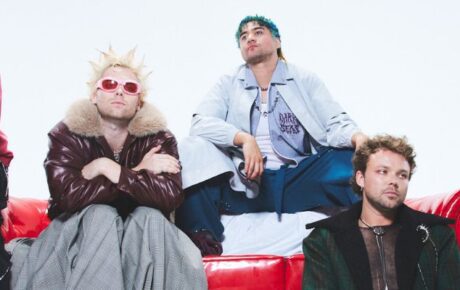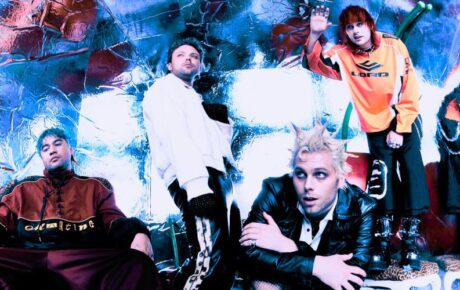The album that we have all come to call “The White Album” is in reality called The Beatles, but virtually from the moment it was released, on November 22, 1968 (en route to topping the UK charts on December 7), it picked up its more popular moniker. Such was the impact of the album, the ninth studio outing by The Beatles, that there are some who have mistakenly cited it as the first double-album of the rock era. However, that honor belongs to Bob Dylan’s Blonde On Blonde, which was released two years earlier.
In fact, The Beatles was not even the first double-album by a band. A few months after Dylan’s opus, Frank Zappa And The Mothers Of Invention released their debut, the double-album Freak Out! And yet, 50 years after its release, The Beatles remains a groundbreaking record.
For Beatles fans in the late 60s, waiting for the release of the album felt like an eternity. Sgt Pepper’s Lonely Hearts Club Band came out in June 1967, and so by the time The Beatles was released it had been close to 17 months without a proper new studio album from the group (though there had of course been the Magical Mystery Tour double EP in Britain; issued on December 8, 1967 as a six-track release in the UK, it received some additional single cuts in the US, turning it into an 11-track album that topped the charts).
The Beatles was largely written in Rishikesh, India, between February and April 1968, during The Beatles’ stay at the Maharishi Mahesh Yogi’s ashram, where they were studying Transcendental Meditation. Following a short break after returning to the UK, The Beatles began recording their new album at the end of May and had it finished by mid-October. The sessions were, as usual, largely done at Abbey Road, but for the first time the group began using an eight-track machine located at Trident Studios.
When it finally hit the shelves, those of us who had waited patiently for a new Beatles album were not disappointed when we rushed home from our local record store to play the record. “Back In The USSR,” the opening track on Side One, dates from Rishikesh and was inspired by Chuck Berry. According to Beach Boy Mike Love, who was also at the Maharishi’s retreat, “I was at the breakfast table when Paul McCartney came down with his acoustic guitar, playing ‘Back In The USSR.’ I said, ‘You ought to put something in about all the girls around Russia.’” It’s a perfect pop song that segues into John Lennon’s “Dear Prudence”: the sort of musical juxtaposition that is everywhere on The Beatles. Inspired by Prudence Farrow, sister of actress Mia Farrow – two more Rishikesh residents – it feels like a rock song rather than a pop song, and helps set out the essential ying and yang at the heart of the album.
Of the 30 tracks on The Beatles, 25 are credited to Lennon & McCartney, but they were invariably written solo; according to Paul, “Birthday” is the only 50/50 song on the record. Usually with The Beatles, a song’s lead singer is also its songwriter, and in a number of cases the songs were even recorded as solo efforts, rather than as the foursome that the group had been used to recording as.
Elsewhere, George Harrison has four songs on the album, including the towering “While My Guitar Gently Weeps,” which features Eric Clapton on lead guitar – though there was no such credit on the original album. It’s joined by George’s “Long, Long, Long”: another example of his skill as a songwriter. There’s even a Ringo Starr-penned song, “Don’t Pass Me By,” the drummer’s first ever solo composition, written sometime before he joined the group in August 1962. Given the way The Beatles came to be made, such disparate songwriting contributed to the lack of a cohesive musical style across the album, a fact that many contemporary reviewers noted, even while many others have said that this gives the album its rasion d’ être.
As The Guardian’s Tony Palmer said at the time, “If there is still any doubt that Lennon and McCartney are the greatest songwriters since Schubert,” the album “should surely see the last vestiges of cultural snobbery and bourgeois prejudice swept away in a deluge of joyful music making”. Meanwhile, Derek Jewell in The Sunday Times offered this: “The best thing in pop since Sgt Pepper. Musically, there is beauty, horror, surprise, chaos, order. That is what The Beatles are on about. Created by, creating for, their age.”
At the time of its release the album’s packaging was inspired. Designed by British pop artist Richard Hamilton, in collaboration with Paul McCartney, it is the complete opposite of Sgt Pepper’s psychedelic sleeve. With the blind embossed band name and the individual numbering of each copy, however, it created its own set of problems for The Beatles’ record label to produce in vast quantities – and also ensured that future Beatles collectors would set off on the hunt for low-numbered copies. In 2008, a copy numbered 0000005 sold for £19,201 on eBay; seven years later, Ringo sold his personal copy, numbered 0000001, at auction for $790,000.
Latterly, Rolling Stone ranked The Beatles at No.10 on one version of its list of the 500 greatest albums of all time. And yet some still argue that it includes filler among the killers – but then again, The Beatles’ fillers are way better than most people’s killers.
Attempting to break the album down, track by track, would need more space than we have. Many others have, however, done this, offering extended and erudite comments on a masterpiece. Instead, let us give you some factoids that will, perhaps, make you listen to “The White Album” in a whole new way.
• “Julia” is about Lennon’s mother and is the only time that he played and sang unaccompanied on a Beatles track.
• “Rocky Raccoon” came from a jam session with John, Paul and Donovan in Rishikesh.
• “Everybody’s Got Something To Hide Except Me And My Monkey” is the longest title of any Beatles song and came from one of the Maharishi’s sayings, to which John, the song’s writer, added “and my monkey”.
• “Savoy Truffle” is named after a chocolate found in a box of Mackintosh’s Good News, which Eric Clapton enjoyed eating.
• “The Continuing Story Of Bungalow Bill” mocks the actions of a young American who was visiting his mother at the ashram in Rishikesh, and who set off on an elephant in order to hunt for a tiger.
• Cult leader Charles Manson told his followers that “Helter Skelter” was part of The Beatles’ coded prophecy of an apocalyptic war, not realizing that it actually referred to a type of British fairground attraction.
• “Mother Nature’s Son” was inspired by one of the Maharishi’s lectures in Rishikesh. The same lecture inspired John’s unreleased song “Child Of Nature,” the tune of which he used for “Jealous Guy.”
• John and Paul thought that “Revolution 1” was unsuitable for a single, which is why it was re-recorded a couple of months after this original version.
• Clapton plays a Gibson Les Paul on “While My Guitar Gently Weeps,” the guitar he had given as a gift to George, who named it Lucy.
• After “Cry Baby Cry” and “Revolution 9” there is a snippet of an unlisted track, sung by Paul. It is popularly known as “Can You Take Me Back” and was recorded during the same session for “I Will.”
Now just find a spare hour and half in your day, play the album from start to finish, and marvel at The Beatles’ genius. And muse on this while you’re at it: none of them were older than 27 when they began recording “The White Album”…
Article originally published on uDiscoverMusic.com.
SEE ALSO: How The Beatles’ Movies Influenced The Future Of Cinema












